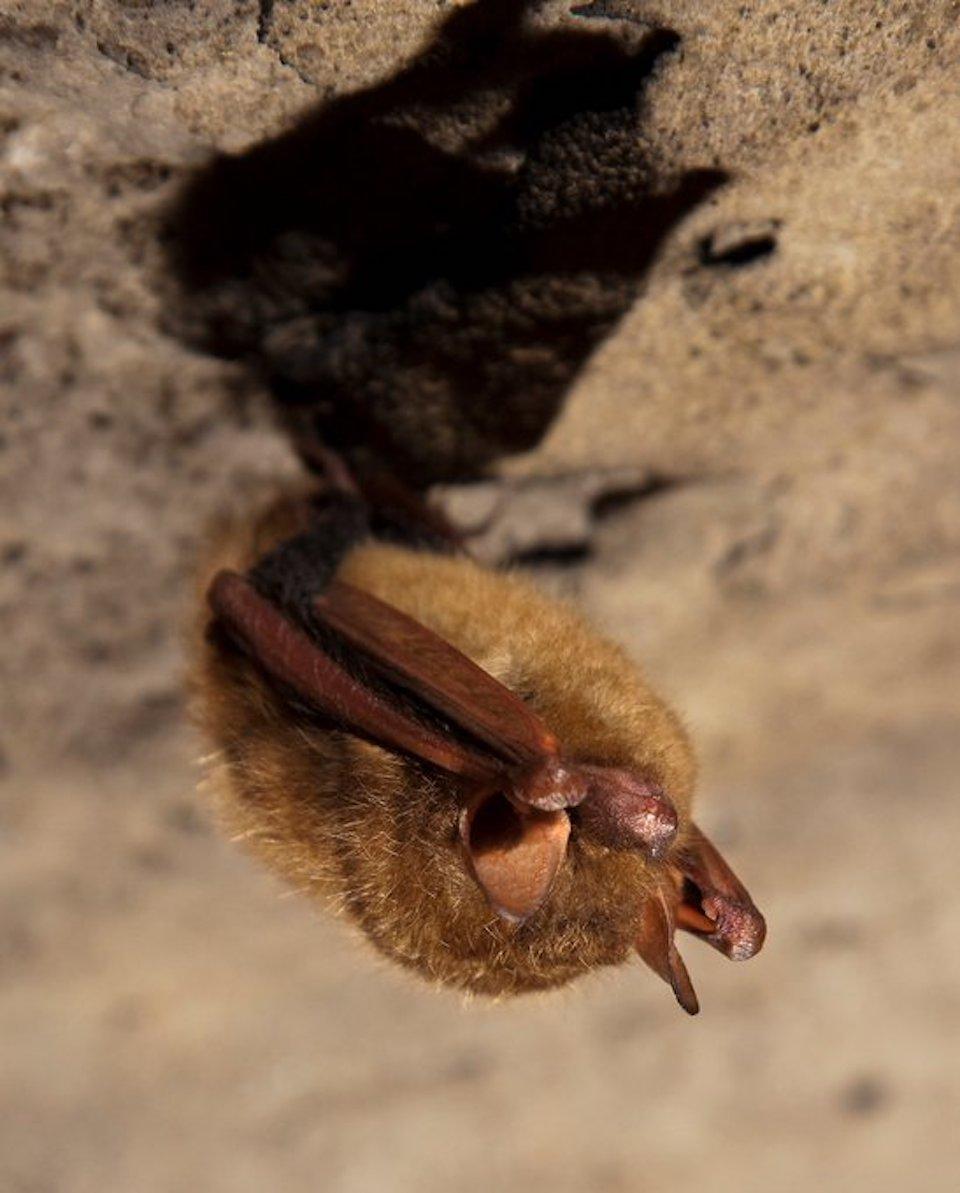
White-nose fungus has led to the loss of 75-80 percent of Tri-colored bats at Mammoth Cave National Park/NPS
It's been nearly 14 years since "white-nose syndrome," named for a white powder-looking fungus found on the nose of bats, was first identified on a bat in New York. Since then the disease has moved westward, leaving millions of dead bats in its wake. At Mammoth Cave National Park in Kentucky, the disease is blamed for the loss of 75-80 percent of Tri-colored bats there.
National Park Service staff at the park say Tri-colored bats were once among the most often seen bat species in the cave. Today White-Nose Syndrome has made it a much more rare event. If you see one of this species, consider yourself fortunate.
The fungus behind White-nose syndrome was spotted in North Dakota this past summer. As of July, WNS has been confirmed in bats from 33 states and seven Canadian provinces. North Dakota joined Wyoming, Mississippi and Texas as states that had detected the fungus, but not yet confirmed cases of WNS.
Bats are important for healthy ecosystems and contribute at least $3 billion annually to the U.S. agriculture economy through pest control and pollination.
State and federal agencies are asking for help to stop the spread of this disease. The best way to help protect bats is by staying out of caves and areas that are closed. If you see a dead or sick bat, notify park rangers or state biologists. Do not handle bats. Additionally, you can help slow the spread of WNS by decontaminating your caving and hiking gear and boots, and by not moving potentially contaminated clothing and equipment to areas where Pd is not known to occur. Visit https://www.whitenosesyndrome.org/ for more information.
The agencies and organizations of the White-nose Syndrome Response Team are dedicated to finding ways to reduce the effects of WNS and improve survival of bats. Several potential solutions are under development, including habitat modification, biologically derived antifungal agents and a vaccine for bats.



Add comment